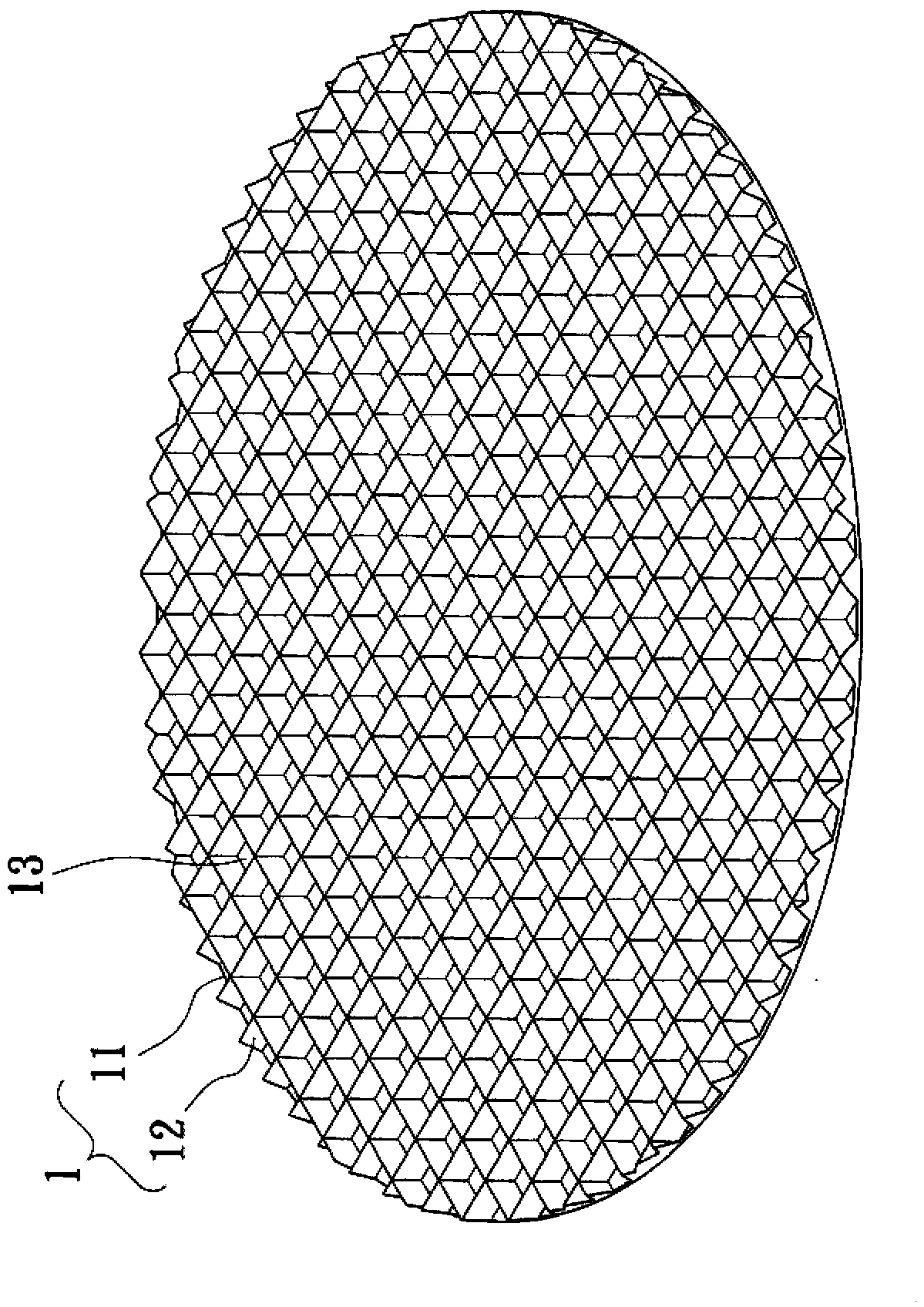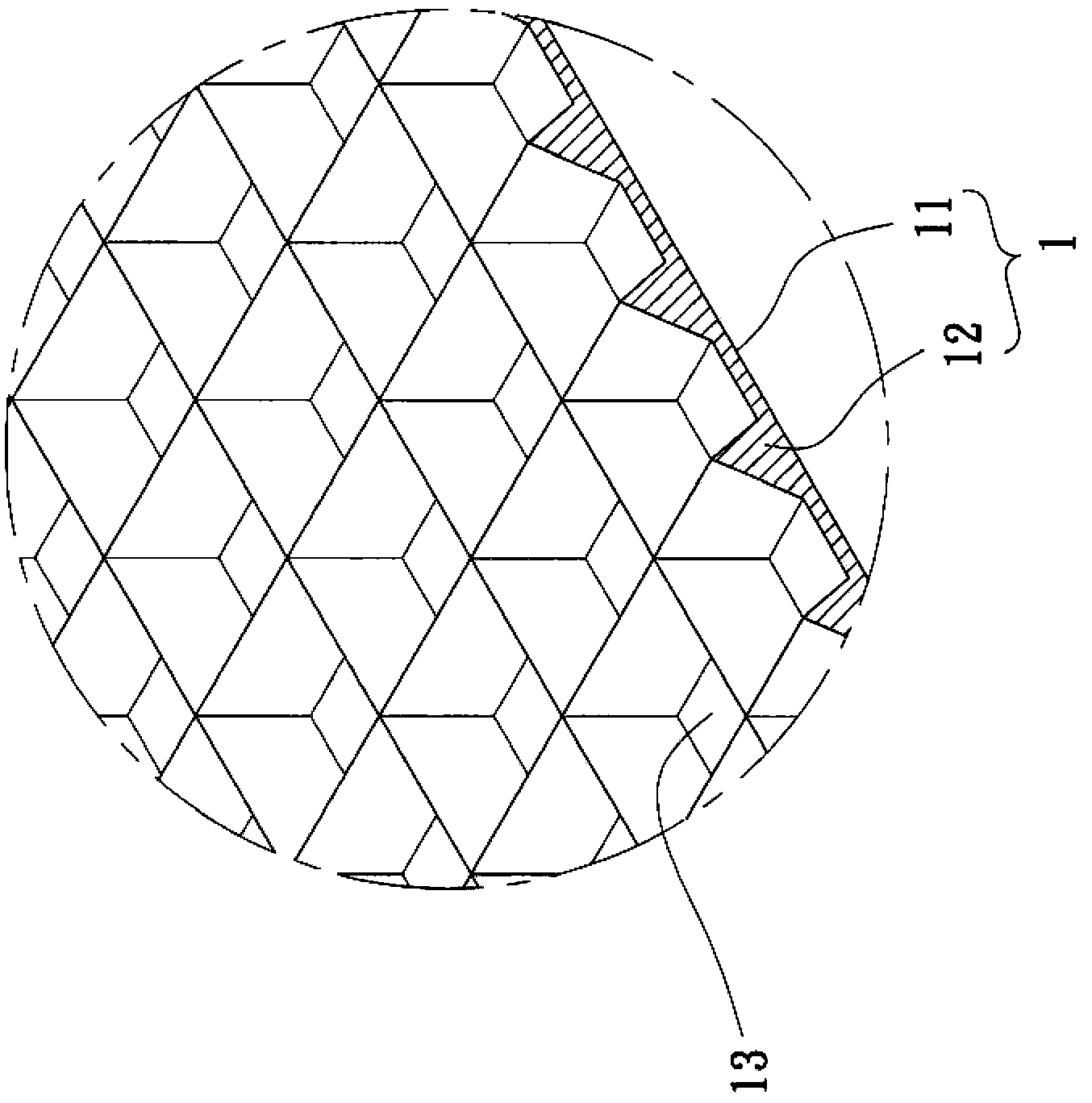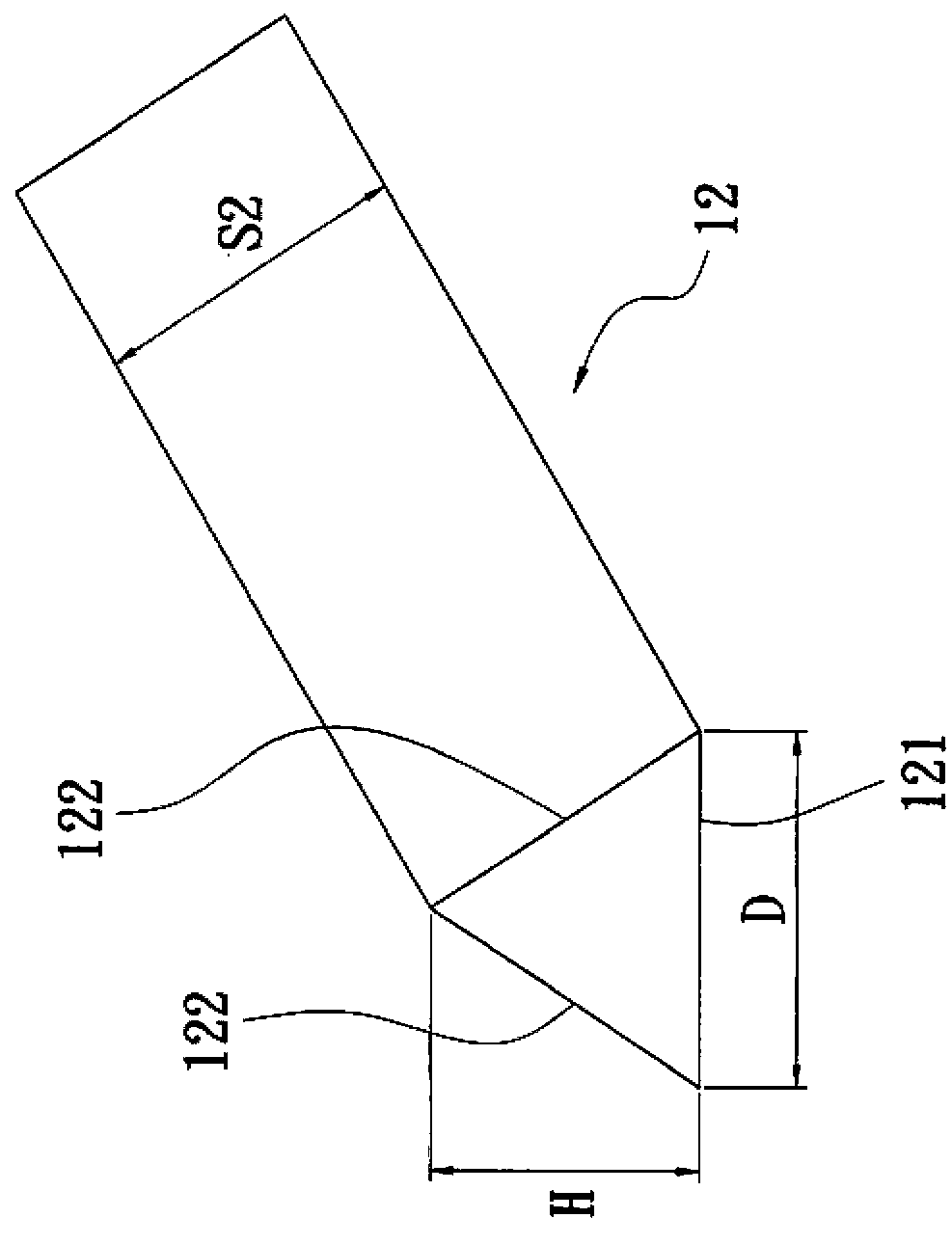Patterned base material with emitting angle convergent and light-emitting diode element
A technology of patterned substrates and light-emitting diodes, applied in electrical components, semiconductor devices, circuits, etc., can solve problems such as affecting luminous efficiency, high defect density of gallium nitride thin films, and poor crystal quality of the active light-emitting layer, achieving increased Light extraction efficiency, the effect of good light extraction efficiency
- Summary
- Abstract
- Description
- Claims
- Application Information
AI Technical Summary
Problems solved by technology
Method used
Image
Examples
Embodiment Construction
[0038] In order to make the object, technical solution and advantages of the present invention clearer, the embodiments of the present invention will be further described in detail below in conjunction with the accompanying drawings. Here, the exemplary embodiments and descriptions of the present invention are used to explain the present invention, but not to limit the present invention.
[0039] The purpose of the present invention and its structural design and functional advantages will be described based on the preferred embodiments shown in the following drawings, so that examiners can have a deeper and more specific understanding of the present invention.
[0040] First, see Figure 1~Figure 3As shown, it is a preferred embodiment of the patterned substrate 1 with converging light emitting angles of the present invention, mainly on the surface of the substrate 11, a plurality of closed geometric shape regions 13 are provided, and the geometric shape regions 13 are compose...
PUM
 Login to View More
Login to View More Abstract
Description
Claims
Application Information
 Login to View More
Login to View More - R&D
- Intellectual Property
- Life Sciences
- Materials
- Tech Scout
- Unparalleled Data Quality
- Higher Quality Content
- 60% Fewer Hallucinations
Browse by: Latest US Patents, China's latest patents, Technical Efficacy Thesaurus, Application Domain, Technology Topic, Popular Technical Reports.
© 2025 PatSnap. All rights reserved.Legal|Privacy policy|Modern Slavery Act Transparency Statement|Sitemap|About US| Contact US: help@patsnap.com



